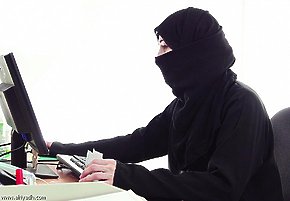Studying the female Saudi blogosphere
{jcomments on}
While there has been a considerable amount of research about the implications of introducing the Internet to contemporary societies, women’s cyber activities in the Arab World in general and in Saudi Arabia in particular is still a recent area of research.
I have been compiling data for my research studies and examining the increasing phenomenon of women bloggers in Saudi Arabia by analysing the ways in which the Internet has been used across different aspects of social life. I have explored why Saudi women have turned to this technology and the possibilities and outcomes of such technical revolution and how it has been used. The textual analysis I have done aimed to identify the various functions the Internet play in Saudi social, political, religious and cultural fields, especially where it is the main interactive media tool in Saudi Arabia that enables women from different classes and age groups to participate, to shape and be shaped by the content of the cybersphere.
My study is essential for journalism because opinion and information become journalism when they are circulated among a public, and because it sought to ascertain how far women’s personal and political status in Saudi Arabia has been renegotiated through online journalism, since as yet; women in Saudi Arabia have no clear voice in mainstream media and women journalists are chained by male guardianship and segregation rules which make their work difficult, unbalanced and incomplete. King Abdullah, a champion of women’s rights in the Saudi context, has moved cautiously to grant women a bit more mobility and a few more rights while avoiding a backlash from the religious right, but the deeply embedded nature of gender-based judgements and assumptions that permeate Saudi media, society, and political institutions made emancipating Saudi women a slow process. My research aimed to find out how successful online journalism has been used as a protesting tool by Saudi women who are demanding gender equality rights. The study was motivated by my own experience as a journalist who worked for 17 years in Arabic media, and as one of the earliest Arab women bloggers who used to receive calls for help by email from oppressed women, desperate to make their voices heard. I will do my best to bring to the readers some of my findings in articles to come.
tamimi@awmwc.net








